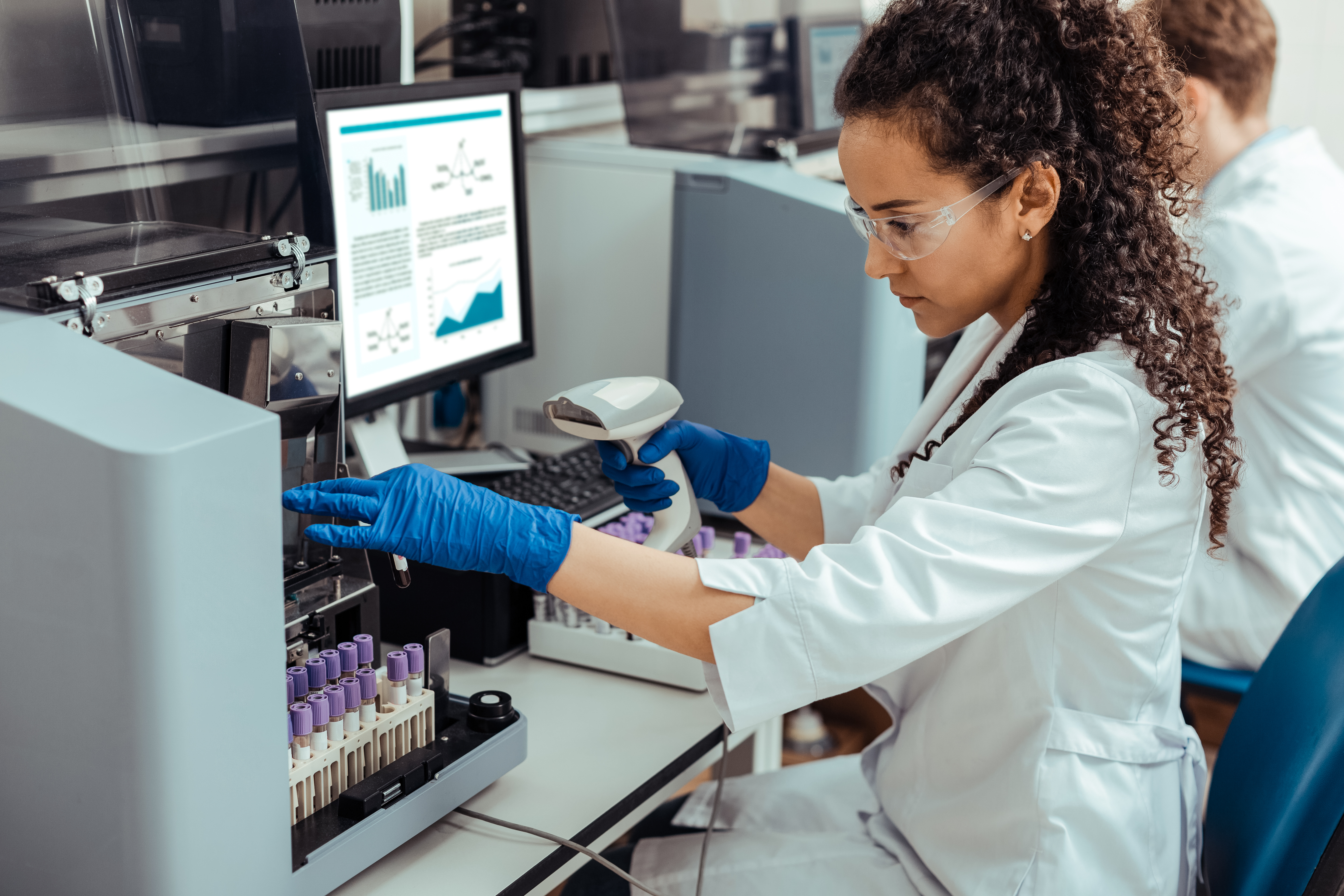Updated December 2024
If you want a healthcare career that involves challenging, highly detailed work but doesn’t require years of training, you’re smart to be looking into becoming a medical lab assistant.
This job is all about collecting samples and running routine tests to help doctors diagnose illness and make decisions about patient care. It’s important work that requires great precision and accuracy.
So what does it take to become a medical lab assistant?
Here are five simple steps you need to follow.
1. UNDERSTAND WHAT MEDICAL LAB ASSISTANTS ACTUALLY DO
First, you need to be clear about what the role involves.
Medical lab assistants collect and process tissue, blood, urine, and other biological samples. In some cases, they get the samples directly from patients (i.e. by drawing blood). In other cases, they receive samples collected by nurses and other clinical personnel.
If you become a medical lab assistant, your responsibilities could include:
☑️ Explaining collection procedures to patients and answering basic questions
☑️ Verifying patient information and labelling specimens
☑️ Preparing samples for analysis (such as by freezing, staining, dissolving, or placing the sample on a microscope slide)
☑️ Performing routine tests, like typing blood or checking glucose levels in urine
☑️ Entering data into specialized lab software
☑️ Sterilizing, operating, and maintaining lab equipment
☑️ Keeping lab supplies adequately stocked
☑️ Following safety, hygiene, and infection control procedures
2. TAKE NOTE OF THE SKILLS ALL MEDICAL LAB ASSISTANTS NEED
You’ll learn the practical skills related to specimen collection and lab procedures in medical lab assistant training. But even before you get started with that, it’s a good idea to reflect on the traits and characteristics you need to succeed in this role.
Good medical lab assistants are:
☑️ Methodical and precise—You need to be able to follow procedures and instructions exactly to avoid contaminating a sample or getting incorrect results.
☑️ Extremely detail-oriented—Your work helps doctors make diagnoses and treatment decisions, so taking accurate readings is essential.
☑️ Comfortable with technology—You’ll be working with standard software like Microsoft Office along with specialized laboratory information systems like Delphic.
☑️ Able to work quickly and stay calm under pressure—Even when you have a heavy workload, you can’t lose your cool (or your focus).
☑️ Trustworthy and discreet—It’s important to maintain the confidentiality of patient health information.
3. COMPLETE MEDICAL LAB ASSISTANT TRAINING
You’ll need college-level training to get started in this career. Fortunately, medical lab assistant training does not take much time. Most programs are well under a year long.
For instance, Herzing’s accelerated medical laboratory assistant program provides comprehensive training in just four months.
You will learn about:
☑️ Medical terminology
☑️ Anatomy and physiology
☑️ Laboratory math (percentages, fractions, ratios)
☑️ Collecting, preparing, and testing specimens
☑️ Quality control
☑️ Communicating with patients and dealing with challenging behaviours
☑️ Basic computer skills
☑️ Using and caring for lab equipment
☑️ Staying safe in the labPrograms also include a clinical practicum, which is typically anywhere from four to six weeks long.
The practicum is your opportunity to get actual work experience in a real lab. You can practise your skills, build your confidence, and add to your resume.
This is an excellent way to transition into your first job as a medical lab assistant. Some students even get hired directly from their practicums.
4. GET CERTIFIED BY THE CSMLS
The next step in becoming a medical lab assistant is getting certified by the Canadian Society for Medical Laboratory Science (CSMLS).
Certification is not required to work as a medical lab assistant, but many employers prefer to hire candidates who have it.
The certification exam consists of 150 multiple-choice questions and takes 2.5 hours to complete. If you don’t pass the first time, you can have two more attempts.
Herzing’s program trains students in all the theory and skills required to pass the exam.
5. EXPLORE ENTRY-LEVEL CAREER OPPORTUNITIES FOR MEDICAL LAB ASSISTANTS
Opportunities can be found in:
☑️ Hospitals
☑️ Clinics
☑️ Universities and colleges
☑️ Research labs (private or government)
☑️ Biotech companies
READY TO BECOME A MEDICAL LAB ASSISTANT?
It all begins with quality training.
Check out the medical laboratory assistant program at Herzing College. It’s designed to get you job-ready in just four months.
The program includes a six-week practicum as well as preparation for the CSMLS certification exam.
Still have questions? An admissions advisor can explain all the details about course schedules, costs, financial aid, and more.
Click below to learn more about the program and chat live with an advisor. We’re here to help!







